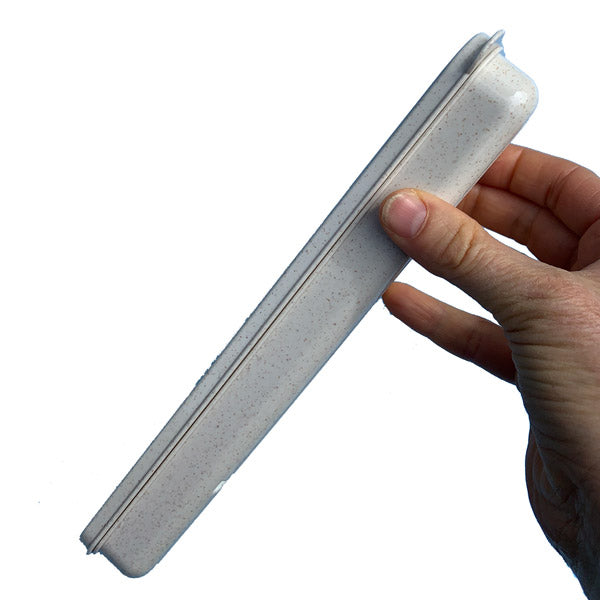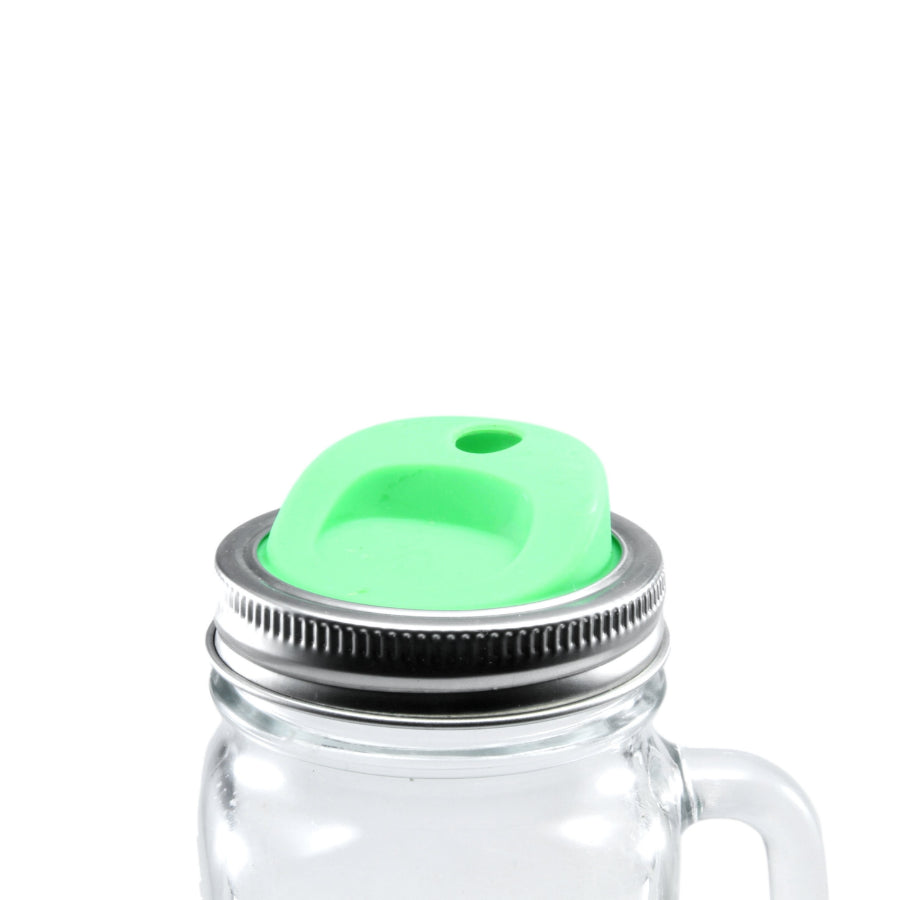We often get asked how we make our straws. I try and post videos of me on the torch so that people can see exactly how I create our sippers, but there is a rich and long history of using heat to make pretty and useful things in glass. So grab a drink (with your favourite sipper, of course) and have a read.

The History of Lampwork
Early glassmakers used oil lamps to create the flame necessary to do their craft, hence the name “lampworking”. Today lampworkers work with a highly focused flame produced by a torch using natural gas. Lampworking is also known as “flameworking” and “torchworking”.
Lampworkers use fire to soften glass to make it malleable and thereby suitable for crafting into various shapes, many of them highly intricate and colourful glass beads and figurines. Glassblowers, by contrast, melt glass inside a furnace, and then use a hollow tube to blow air into the molten glass to expand and shape the glass. As such, blown glass is typically hollow inside.
The Ancient Egyptian Origins of Lampworking

According to Roman historian Pliny the Elder (CE 23 – 79), prehistoric humans in Syria discovered glass accidentally around 5000 BCE when the rocks upon which they were cooking melted and then solidified after cooling. Before long “lampworkers” in ancient Egypt learned to make glass out of sand and quartz pebbles in small earthen furnaces shaped like beehives. Glass beads found in Egyptian archaeological sites dating back to around 4000 BCE are the first known manmade glass objects. By 3500 BCE ancient Egyptians were trading glass beads throughout the ancient Middle East.Glass objects, including beads, vessels and jewellery appear frequently in archaeological sites, both in Egypt and in surrounding countries.

Cobalt-blue glass beads created by ancient Egyptian lampworkers.
The original Egyptian lampworkers used hunks of glass produced in their furnaces which they shaped over an open flame. At first the Egyptian lampworkers produced their lampworking flame with a “hot volcano” - a term used to describea cone-shaped furnace that allowed a flame to shoot up through a narrow opening at the top, with the escaping hot air replaced through an opening at the bottom. The result was a flame sufficient to melt and form glass. The most popular colours produced at the time were royal blue and turquoise which resembled the semi-precious stones lapis lazuli and turquoise which these early civilizations valued.

Ancient Egyptian glass bead in the form of a fish.
Over time, the ancient lampworkers shifted from hot volcanos to oil lamps. To boost the temperature of the fire these early lampworkers blew air into the flame through a pipe, a hand-held bellows, or a foot-powered bellows. The peoples of Mesopotamia adopted these techniques soon after the Egyptians. In the 1st century BCE the Roman Empire further refined lampworking in Phoenicia (comprising contemporary Lebanon and northern Israel). The Eastern Mediterranean, including Syria, Judea and Egypt, remained a centre of glass production down through the centuries. Over time glass production also travelled across the Mediterranean into Europe.

Ancient Egyptian glass bead portraying Hathor, the goddess of music who personified joy, beauty, love and motherhood.Height:1 2/5" (3.5cm);Width:1" (2.7cm)
Lampworking in Medieval Europe
After the fall of the Roman Empire in 476 CE, glassworking continued to gain popularity in medieval Italy. By 1200, Venice and the nearby island of Murano dominated the glassmaking industry, andMurano became the glass bead capital of the world for over 400 years. Despite Venetian efforts to keep their techniques secret, by 1400 the French, Germans, and others across the continent were also making glass.

Engraving of a lampworking workshop, Ars Vitraria Experimentalis, Johannes Kunckel, 1689.
The Industrial Revolution
With the emergence of chemical science and the invention of microscopes and laboratory glassware in the 17th Century, glassmakers began to use new additives such as lead to create stronger glass that was more heat and chemical resistant. The industrial revolution in Europe and America introduced automated glass production with the invention in1820 of the mechanical press. Glass quickly became a common household item for people of all social classes.
In the 1880s, Otto Schott invented borosilicate glass in Jena, Germany. Known also as Jena glass, borosilicate could withstand even higher temperatures and harsher chemicals. Schott created borosilicate by melting together silica sand, soda oxide/ash, aluminium oxide - all previously used in traditional glass making - with the new added ingredient of boric oxide or boron. The addition of boric oxide/boron gave this more robust glass its name - borosilicate. Glass artists often refer to borosilicate by the abbreviated term “boro”. At first the new borosilicate was used to produce largely scientific and utilitarian products such as glass tubing, beakers, bottles, and other laboratory glassware.

Oil burner from the early 1900s, Museum of Glass and Jewelry, Jablonec Nad Nisou, Czech Republic.
Lampworking In Modern Times
Borosilicate, however, presented a new problem which, in turn, gave rise to a solution that revolutionized lampworking. The melting temperature of borosilicate is so high that the existing oil lamps could not melt it. A method of heating the glass to much higher temperatures was needed for lampworkers to work the new material. Lamp designers found a solution borrowed from the welding trade. They created new tabletop torches which combined natural gas or propane with pure oxygen and produced a flame hot enough to melt borosilicate. The combination of the hot flame and precise focus of the new torches, together with the added strength of the boro glass, has allowed lampworkers to push lampworking to undreamed of new horizons.

Beadmaker in long skirt at the torch. Guillaume Louis Figuier,Industrie du verre et du cristal. About 1870.
In 1915, Corning Glass Works in Corning, New York, started making “Pyrex” bakeware and cookware out of borosilicate. Before long the name Pyrex became widely synonymous in the English speaking world with borosilicate. Present day lampworkers, including us, often explain our artwork by saying “it’s made from the same glass as Pyrex” which, typically, prompts a knowing nod of the head and “ah hah” in response.

Pyrex brings borosilicate to the masses. (1915)
It was around this time that reusable glass drinking straws produced from borosilicate glass tubing made their first appearance in hospitals as a way for patients to drink while laying in bed.
Yes, glass straws have been around since the early 1900's!!! And we've had customers tell us many times that they found glass straws in their attics or while cleaning an elderly parent's home. Treated well, glass straws can last over one hundred years!
And since borosilicate is heat resistant and highly robust, hospitals were able to easily boil and sterilize the glass for safe reuse. To this day reusable glass drinking straws are an essential tool for many hospitalized and disabled individuals. Lampworkers are able to easily bend the glass straws near the drinking end for greater ease of use for the bedridden and disabled.
Today, skilled lampworkers have taken reusable glass drinking straws to another level, adding artistic embellishments with a rainbow palette of borosilicate colours and designs. Some of these designs are actually not all that different from the glass artwork of ancient Egyptian lampworkers. Present-day artistic and eco-friendly reusable glass straws have also played a huge role in dramatically reducing the use of single-use plastic straws.






